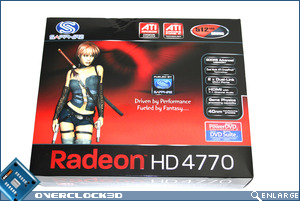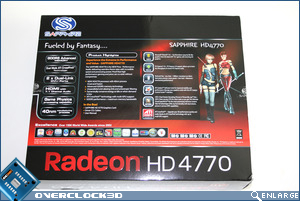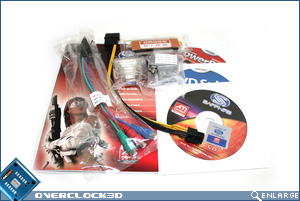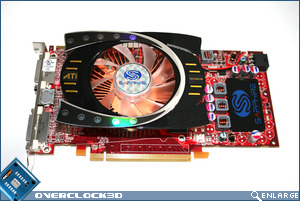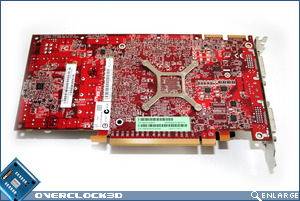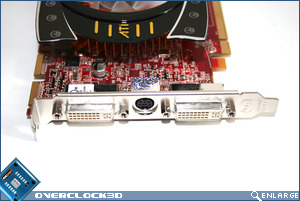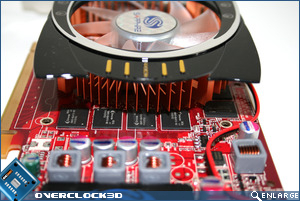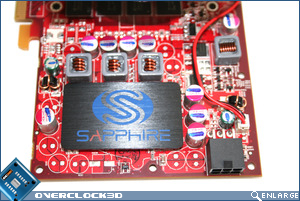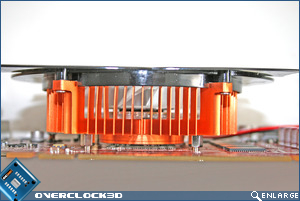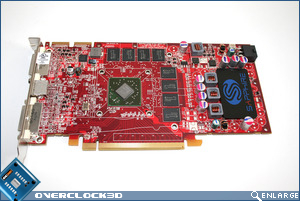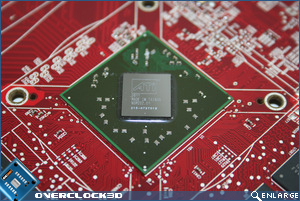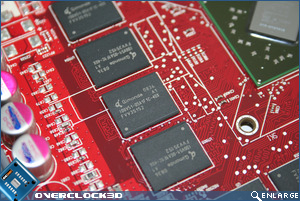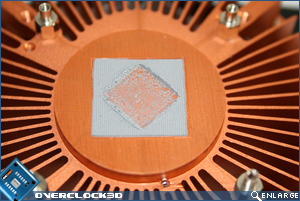Sapphire HD 4770 PCIe Graphics Card
Packaging & Appearance
Â
The box is presented in typical Sapphire fashion with a Lara Croft rendered model featuring on the front of the box. A brief run down of the specifications are found on the right hand side of the box which are: GDDR5 memory, Dual Mode ATI CrossfireX, Dual link DVI ports, HDMI with 7.1 Audio, Game Physics processing capability (Havoc not PhysX) and finishing of with the 40nm manufacturing process. Also included in the bundle is the Power DVD creativity suite. Flipping the box over, the product highlights are explained in greater depth with emphasis on the 40nm architecture claiming faster and cooler performance.
Â
Â
Removing the outer sleeve we arrive at a plain cardboard box which appears to have been designed by an Origami fanatic. IÂ do wish Sapphire would package their products better as, with most examples, the contents were not securely packaged. The accessories include a driver CD, 2 Power DVD discs, HDMI and VGA adaptors, a manual, a molex to 6-pin PCIe power cable and a TV out cable. Also included which was missing from the Asus 4770 was a Crossfire bridge, essential for those wanting to link two cards together for some Crossfire action.
Â
Â
The card itself is, as we have seen with our two previous reviews, a reference affair with the now familiar ATI cooler atop of the GPU. Sapphire have however added there own little touch to the CPU with a couple of stickers, hardly the pinnacle of design but a welcome gesture nonetheless. The underside of the card is again very basic with no additional cooling required thanks to all 512mb of GDDR5 sitting under the main cooler on top of the card. The familiar 4 screw, spring loaded and cushioned back plate is all that holds the main heat sink to the card which should make removal/replacement very easy.
Â
Â
While the I/O shield is only single slot by design, don’t be fooled as this is a dual slot card thanks to the high profile heat sink fan cooler. 2 DVI ports capable of transmitting data via VGA and HDMI with the included adaptors are separated from each other with a TV output should you wish to view on the ‘big screen’. Once again we see that ATI have not seen it necessary to directly cool the memory chips relying instead on passive air from the down draft of the main GPUÂ cooler to keep the IC’s temperature in check.
Â
Â
One difference the Sapphire card has over it’s rivals that we have seen thus far is the inclusion of an anodised aluminium heat sink which covers the voltage regulating units of the HD4770. Whilst other manufacturers did not deem this necessary it is a comforting thought that Sapphire wish to cool the Mosfets which should increase the longevity of the card. As previously stated, the main cooler while at first glance appears copper, is in fact anodised aluminium with a copper colour. This cooler was very quiet in testing and certainly a leap forward from the old reference coolers which were very noisy in comparison.
Â
Â
With the cooler removed we can see the bare card and in particular the smaller die of the RD470. This is much smaller than cores of previous generations and while a 15nm shrink is not exactly eye popping, the core certainly looks much smaller than the last ATI GPU’s IÂ have seen. Strange then that ATIÂ seemed it appropriate to add a large cooler to the card as this surely would have been the perfect basis for using a single slot cooler therefore appealing to the larger market?
Â
Â
Thankfully, the cooler was as IÂ suspected, very easy to remove. The base of the aluminium cooler has a block of thermal paste which was very malleable and a far cry from the cement used on previous cards. Good news then for those who might want to fit an aftermarket cooler and certainly good news for those who feel the need to replace the stock gunk normally found on GPU’s. This cards mount was perfect and IÂ see little need to replace the TIM. The integrated memory chips hail from Qimonda, much the same as the other reference cards so overclocking results, IÂ would hope, should be similar.
Â
Â
Only a couple of subtle differences separate the Sapphire product from its rivals and as such IÂ would not expect this card to perform so much differently from them given that all of the cards tested thus far have the same specifications and clockspeeds. However, given that the Sapphire card includes a Crossfire bridge and a little more attention has been given to the stock design, first blood has to go to it. Sadly, the packaging of the product is less than appealing and while our sample arrived in good condition, it is certainly not as well packaged as the other cards we have received.
Â
Let’s take a look at our test setup I intend to use for today’s review and assess the HD4770’s heat output and power consumption along with it’s overclocking prowess…Â



